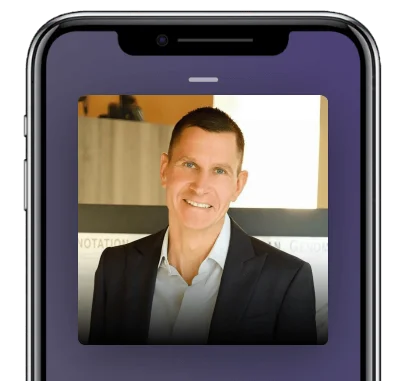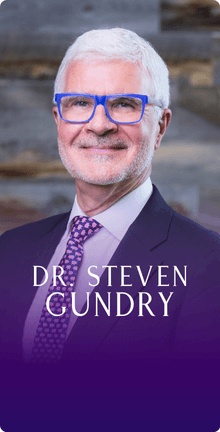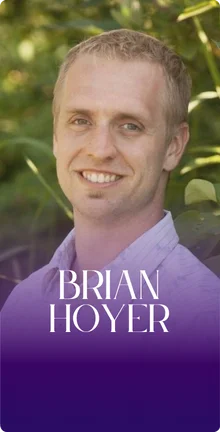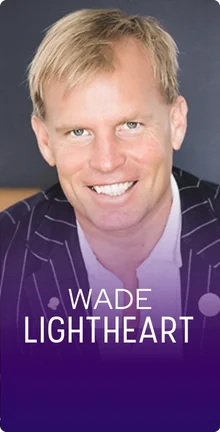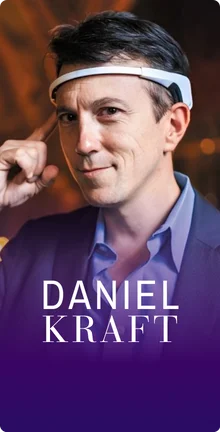In this Episode
- [00:48]Stephan introduces Dr. David Karow, President and Chief Innovation Officer at Human Longevity Inc, and an expert in advanced genomic analytics and MRI.
- [02:24]Dr. David shares the history of their company.
- [08:57]Dr. David explains the goals of their program assessments.
- [12:48]The different genomic testing capabilities explained by Dr. David.
- [17:41]The technology used in Identifying pre-symptomatic high risk for dementia, mild cognitive impairment, Alzheimer’s,
- [21:52]Treatment options for early detection of diseases, specifically cancer.
- [26:00]Dr. David shares his opinion on how he sees health care systems in the US.
- [31:10]Dr. David provides the price list of their assessments.
- [34:21]What is the difference between a superficial physical exam from a genetic testing assessment?
- [54:19]The three pillars of the Platinum program assessment not included in the core assessment.
David, it’s so great to have you on the show.
Thank you so much. It’s a real honor.
Let’s start off by explaining for our listeners, what exactly Human Longevity, Inc. does. There’s this Health Nucleus brand that you have. It’s a pretty amazing offering that you’ve got, but for those who are unaware of your brand, let’s just give them a brief rundown.
Maybe at a high level, it’s worth going through the history of our company because I think it will be helpful for your listeners and give a little more insight into what we do. Our company’s been around for about six years and like any startup company, we’ve been through various business models, various focus areas, and various iterations. At one point in the company’s history, we had a number of different divisions and focus areas, including a cancer exome sequencing program, a microbiome program, a pediatric program, and the Health Nucleus, which we’ll talk all about.
Over the last two or three years, the company has focused on one thing and one thing only, that’s really data-driven precision health. In our corporate headquarters here in La Jolla, we have our R&D Center, but on the first floor of our corporate headquarters is a 12,000 square foot precision health space that has eight client rooms, each with their own private bathroom.
Some of our clients like to say it’s a spa-like setting. Our theory of the case is that if we’re going to convince you to come back year after year, we’ve got to create an inviting, warm setting. We’re gonna find out if you’re well, and if you want to stay well, you probably shouldn’t have to go where people are sick. The whole idea of this space is a comfortable well-care space, not a secure space`.
Long story short, as we focus the company, we’ve really focused on the health nucleus. We’re trying to get two things right. One is the experience. The experiential part includes the visit and the setting, but more importantly, it includes the data-driven precision health assessment.
I like to say that we’re using data to drive decision support for nearly old big decisions in our lives. Our cars have hundreds of sensors, all our investment decisions are data-driven. We probably know more about our car on an annual basis than we do about our own health. Our goal is to really use data, 150 gigabytes of data growing to a terabyte, to drive decision support for health and wellness. The way that we do that is through our assessment, which is really three testing pillars, genomics, advanced imaging, and advanced blood work, integrated together with AI and machine learning to really answer two questions.
With advanced knowledge and data, people can avoid getting diseases in the first place. Share on XOne is, what is your condition today? What is the state of your health and wellness today? What is the state of your performance today, but more importantly, what is your risk for chronic age-related disease in a year from now? 5 years from now? 10 years from now? Based on everything we know about you and all the data that we pulled. If the risk is elevated for those chronic age-related diseases, what can we do to mitigate that risk, lower that risk, and potentially even avoid getting the disease in the first place, really enabling this concept of survivorship, that with advanced knowledge and advanced data, avoid getting diseases in the first place.
How did this go from an idea to an actual company? You have a conversation with other founders or go to an Abundance 360 event. Was there some meeting, an “aha” moment in the shower, while mowing your lawn, or something like that?
That’s a great question. Like any scientific startup, it’s fair to say that in the first couple of years of the company, I think we’re more of a sort of a scientific incubator really than a commercial enterprise. During that incubation period was actually the genesis of the health nucleus.
It really started as a science experiment. We set up this space and the initial testing under an IRB and recruited, not patients or clients, but subjects under this research protocol. The whole goal of the study was to evaluate the normal human variation and phenotype through this deep testing, imaging, 4D echo, microbiome, all the other tests that we do, and of course, whole-genome sequencing. The goal was to understand the normal human variation and phenotype is a better way of understanding genotype through this extensive testing.
We recruited, these were self-referred folks in general, and they were presumed healthy. What we learned from our first couple of hundred subjects under this research protocol was that 40% of the presumed healthy, self-referred individuals were not so healthy after all. In fact, 40% had a clinically significant disease that was not previously known, 14% life-altering findings like early-stage tumors, brain, and aortic aneurysms, pathogenic genetic mutations, coronary artery plaque that wasn’t previously known in a pretty significant number of presumed healthy individuals.
We quickly pivoted from a research study into a for-profit, commercial precision health assessment, data-driven precision health assessment in this precision health space that we created. That’s how it got started.
That’s really cool. IRB stands for Institutional Review Board, if I’m correct in that. I believe that’s right, right?
Absolutely. To be fair, there are still components of our assessment, which are under a research protocol. The vast majority is done in the practice of medicine, but we do have some cutting edge technologies, some of those which are under a protocol and all of our clients’ consent for those.
So there are stringent guidelines from the IRB that restrict what you can do. There has to be placebo or double-blind studies or whatever—it’s been a long time since I took biochemistry, I was studying that for a Ph.D. a long time ago; dropped out of that. There are certain restrictions that you are no longer having to worry about when you’re just doing this as an elective procedure on an annual basis, just to make sure that you don’t find anything that is a problem because this is all about early detection.
That’s right. Most of the program and assessment is no longer under a research protocol. There are still components that are but our goal having our roots in science, our co-founder, Craig Venter, 60+ publications over the history of the company. We’re very focused on getting the science right and continue to be focused on the science, and that’s really what drives this company after all.
The goal of this assessment, it’s not a one and done. Roughly 25%, and growing, of our clients come back year after year. The goal is to really accumulate longitudinal data with outcomes so that we can show over time that we’re extending life and that morbidity and mortality are significantly reduced with our assessment. To be completely candid at this point in the absence of that longitudinal data, we have a couple of years of data. We can show baseline data but we can’t say with a straight face that we’re statistically showing that we’re decreasing morbidity and mortality.

Personally, looking at the data we just published a month ago in PNAS (was a landmark paper), the baseline data that we have over time, will likely show a significant reduction in morbidity and mortality for our clients. The whole goal of the assessment, when people ask what we do, “Do we do digital executive health? Do you like an executive health assessment?” and I say, “Actually not.” If you ask someone who is part of an executive health program, what they do, they’ll generally tell you, “Well, we do a more sophisticated annual physical exam.”
We’re really focused on longevity and performance, and the goal for our clients is we want to work with you, partner with you, and to get you over the age of 100 healthily. Maybe you never end up in the ICU. If we find cancer, we’re going to find it at an early stage where it can be sometimes treated on an outpatient basis. If we find an aneurysm, it can be coiled before it ruptures. Our whole goal is to really keep people out of the sick care system.
To get back to your original question, I think that our baseline data is well on its way towards showing that, but with longitudinal data and outcomes, we’ll have a lot more information in that regard as time goes on.
For those who are not familiar with the name Craig Venter, he’s the first person to have sequenced the human genome, if I’m not mistaken, right?
That’s correct. Craig sequenced the human genome through his private company, Celera. At the time, the US government and a number of other governments had a national program. That was led by Francis Collins. Craig and Francis Collins were pioneers in the whole genome sequencing space.
It’s interesting because that was 20 years ago. There was a big signing ceremony. If you Google Craig Venter and Bill Clinton, you’ll see an image of Francis Collins, Craig, and Bill Clinton, who’s President at the time, marking this huge contribution to science and mankind at the White House. I think Tony Blair was there as well.
I think it’s fair to say that since then, there was a lot of hype that the whole genome sequencing, that we had decoded our genome, was really going to usher in precision health, personalized medicine, and of one care.
Frankly, not a lot has happened in that space over the last 20 years. A very small fraction of Americans have had their genome sequenced. Now, clients who come to see us have their genome sequenced. It’s fair to say that was one of the drivers of the company; it was to really show that an individual’s genome can be used in combination with imaging and blood biomarkers for risk assessment, and driving decision support for health and wellness.
Let’s say that our listeners say, “Wait a second, I thought that I had my genome sequenced by 23andMe or by ancestry.com. I got a report. I have a login.” What do you say to that? Because they need to understand the difference between the whole genome and SNPs. Let’s explain that.
That’s a great question. I’m a customer of 23andMe, a big fan. I think they’ve done a huge service by really popularizing genomic testing. We’re grateful as a company. However, I would remind your listeners that there are all kinds of different genomic testing capabilities. Everything from the whole genome (which is what we do), where we sequence all six billion base pairs to sequencing the exome (which is about 2% of the genome) to looking at just 800,000 markers or so, which is what a single nucleotide polymorphism panel, snip panel, or array, which is what 23andMe and ancestry looks at.
We’re looking at six billion base pairs. These arrays or snip panels are looking at about 800,000 markers. You get what you pay for. There’s a lot of power in those snip panels but there’s so much that is left out when compared to sequencing the whole genome.
For instance, 23andMe issues a report on the BRCA gene, so BRCA one and two, which are two genes that are implicated in men in prostate cancer and women in breast and ovarian cancer. You may recall that Angelina Jolie actually was very public about her family’s struggle with breast cancer. Her mother died of breast cancer at an early age. She was then tested and she was actually a carrier of a mutation in the BRCA gene. So she was elected based on the information because she was at high risk for breast cancer. She’d been very public about this to undergo a bilateral mastectomy. She, in fact, is a breast cancer previvor. She’ll never get breast cancer. She used her own genetic information to make that decision.
Now, 23andMe looks at the BRCA gene. There are over 1000 medically significant variants in the BRCA gene that predispose men and women to cancer. How many does 23andMe look at? Three, three of those thousand. We look at everything. If you get a report saying that you’re negative for a mutation or a variant in the BRCA gene from 23andMe. Well, you’re negative for three of the possible thousand mutations. In small, fine print, you can read that they’re only looking at three, but I think most of your listeners don’t understand that subtle distinction, and that’s really important.
We just published this paper in PNAS weeks ago. The highlight of the paper was that ⅙ of our clients have a rare pathogenic genetic mutation that in many cases correlates with findings on an MRI or findings in their blood. Many of those are what we call monogenic variants. They predispose our patients to everything from familial hypercholesterolemia to long QT syndrome, to cardiomyopathy, to atypical cystic fibrosis. The list goes on and on.
None of those mutations would have been able to be derived from a snip panel or array. We feel it’s really important to sequence the entire genome, and in terms of risk prediction and overall assessment for health and wellness. Frankly, if you’re just getting a snip panel or array, you really only get a fraction of the story.
The goal of an assessment is not just silos of data or testing. It's to integrate all that data every year to continuously drive decision, support, and identification on a person's risk for chronic age-related disease. Share on XYou don’t have to have this done every year because it’s your genome; it’s not changing. But it’s important to get these blood panels and imaging and so forth done every year.
That’s correct. In fact, our price point in follow-on years is significantly less than the initial, roughly about half and that’s precisely because we don’t have to re-sequence the human genome. Once we’ve sequenced it, it’s with you forever. What I will say is that we and the scientific community globally every day are making new findings. Identifying new mutations, identifying rare pathogenic, likely pathogenic variants and mutations, so every year that we see our clients year after year, we’re re-annotating their genetic data to see if there’s a new finding over the course of the year.
When our clients come back, yes, they’re undergoing advanced imaging annually and the extensive blood work that we do but also re-annotating that genetic data. The goal of the assessment is not just to do silos of data or testing, it’s to integrate all that data every year, 150 gigabytes to continue to drive decision support and continue to identify a person’s risk for chronic age-related disease.
You’re also presumably using machine learning or AI, deep learning, what have you to cull through the vast amount of data that you’re collecting, to look for anomalies or potential warning signs of some sort of issue, right?
That’s right. In fact, we have an in-the-works and on the regulatory pathway. An eight-year pre-symptomatic readout for mild cognitive impairment and dementia. The whole idea is to identify that risk long before a person actually starts to have clinical evidence of mild cognitive impairment or dementia. We know frankly that 30% of the risk for dementia and Alzheimer’s is modifiable in a person’s control. Some neurologists think it’s as high as 50%. That’s cholesterol, blood pressure, BMI, liver fat, visceral adipose tissue, alcohol, and tobacco use, modifiable risk factors.
If you can identify pre-symptomatically someone who’s a high risk for dementia, mild cognitive impairment, Alzheimer’s, and you can target those modifiable risk factors. It turns out there’s actually quite a bit you can do to mitigate your risk for Alzheimer’s. Now, if you’ve already lost part of your mesial temporal lobe of the brain, its atrophy already lost to disease, you’re not re-growing those neurons. But if we can pre-symptomatically identify your risk long before disease onset in the case of our test in eight years, there is quite a bit you can do for it.
It’s rinse and repeat using the similar AI algorithms and similar data silos, so that risk assessment that we do for Alzheimer’s is based on advanced imaging, quantitative brain MRI, looking at the hippocampal volume, genetic data, including a person’s APOE status, the APOE gene. Two copies of the APOE-4 gene confer a significantly increased risk for Alzheimer’s.
There’s a number of other common genetic variants as well. Blood data like cholesterol and some of the other inflammatory markers, putting all that data together under the umbrella of AI and machine learning to give our clients a pre-symptomatic eight-year readout for dementia.
Now, we’re on the cusp of offering that to our clients. There are some regulatory hurdles but it’s a rinse and repeat with that algorithm using multiple data silos integrated with the AI and machine learning to give pre-symptomatic readout; everything from coronary artery disease, breast and prostate cancer, Alzheimer’s, and a number of other diseases as well.
Do you have some success stories that you can share? I know there’s client confidentiality that you need to respect but I’m sure there are some clients who are happy to yell from the rooftops how their lives were saved by your early detection.
I may not get into personal stories here, but some of our clients have been very vocal in public about their life-altering findings. Many of the clients that come through here are already having gone through executive health programs and executive physicals. Many of our clients have already gotten some of the best care that this country has to offer and yet in 40% of individuals, in 14% life-altering findings, we’re making significant findings.
Presumed healthy already seeing maybe an annual institution for executive physical and coming to us and we’re finding 1 in 50 with early-stage but high-grade tumors, 1 in 50 with the brain and aortic aneurysms, roughly 1 in 10 with advanced coronary artery plaque, of 30% with elevated liver fat and metabolic syndrome, 1 in 6 who have a pathogenic or likely pathogenic genetic mutation that correlates with findings on imaging or blood work.
I think it’s safe to say that we’ve frankly saved the lives of a number of our clients who have come through and many of these clients were told that they were healthy, when in fact, they were not.
Can we walk through some of the treatment options for folks who get this early detection and find out they have plaques, fatty livers, aneurysms or what have you?
Absolutely. It’s something that we’re most proud of is that the findings in most cases, the great majority of cases are highly actionable and that we’re making these findings, either pre-symptomatically or in some cases, as I mentioned, identifying risk well before disease onset. In the cases where we’ve identified disease pre-symptomatically, I think our cancer discoveries are probably the most profound.
Everything from early-stage but high-grade prostate cancers, bladder cancers, collecting system cancers, ear, nose and throat cancers. The list goes on and on. Pancreatic cancer, kidney cancer in nearly all cases. Mediastinal lymphoma, follicular lymphoma, a number of others as well. We have made the findings at Stage I or early-stage disease when it’s curable.

Take mediastinal lymphoma. It’s one of the first cancers that we identified in an 80-year-old male. He had high grade but early-stage mediastinal lymphoma and had not yet involved the lymph nodes. He underwent chemotherapy and radiotherapy. That was three years ago, and he’s cancer-free three years later.
Now is a particularly high-grade aggressive lymphoma, and all of the specialists that we consulted with and that individual consulted with, agree that this in 6 or 12 months would have been a totally different story and perhaps you wouldn’t be with us today. That story recapitulated across the cancer spectrum, across our demographic spectrum. It’s not just folks in their 60s, 70s, and 80s. Two women in their 30s with high-grade papillary thyroid cancer, we caught it early. The intervention was a hemithyroidectomy. There was no tracheal reconstruction that needed to be done because it was caught so early.
Many of the kidney cancers that we identified can be ablated, believe it or not on an outpatient basis. Using image-guided radiofrequency or microwave ablation by interventional radiologists. Those are the techniques that we’ve developed, the platform that we use really enables this pre-symptomatic diagnosis and intervention. That’s the key is really marrying our precision health analytics with precision therapeutics.
That’s amazing. That’s really incredible. You’re definitely selling me; I’m coming back. The first appointment I did last year. I definitely will be coming back.
Thank you. We’ll be glad to have you back. I do say this is not a one and done. We’re your partners in longevity and performance. You can’t come see us once in your life and expect that we’re going to be able to move the needle on your health and wellness over the decades. This is really meant to be an annual assessment. Again, partners in longevity and performance.
I just go back to what I just mentioned; this idea of marrying precision analytics and diagnostics with precision therapeutics. That is really the future. If you think about very common surgery these days is knee replacement done by an orthopedic surgeon. Now, if you talk to many orthopedic surgeons, they’ll say, “Well, maybe in 10 or 20 years from now, we won’t be using a knife undergoing these barbaric total knee replacements, that maybe the future will be identifying cartilage loss before you get bone-on-bone degenerative disease.
Identifying cartilage loss, maybe when there’s a 50% loss, so using the imaging to assess for cartilage thickness and cartilage loss. At that point, maybe it’s a local injection of stem cells that regrow cartilage. This idea of using precision analytics and diagnostic, advanced imaging to drive decision support about early precision interventions that can be used to avoid getting to the place where you would need a total knee replacement in this case.
Unfortunately, this is not covered by most insurance. Just crazy to me that the health care system is not a health care system. It is a disease maintenance system. So, if you wanted stem cell therapy to deal with your knee, you’d have to pay for that out of pocket. That’s not going to be covered. If you want this diagnostic every year, you pay for it. It doesn’t get covered by insurance.
Occasionally, we’ll get pushback or feedback on that. I always say, “Well, if you think well cares expensive, just try the alternative.” Because the alternative is what we have now. It’s sick care and it costs us a lot of money. I think you know the stats, but I’ll repeat them for our audience today. We spend 17% of our GDP (gross domestic product) on health care; 17%. It’s actually much more than we spend on our military spending, which is somewhere around 4% of GDP. That’s $3.7 trillion annually we’re spending on health care.
There are a couple of bad facts associated with that. For all that spend, what are we getting? Well, over the last hundred years, we’ve seen this beautiful rise in life expectancy, this kind of linear march. If you’re female, you live a little longer than male, somewhere around 81, males around 79, and that’s been increasing over the last hundred years. For 2014, 2015, 2016, the last three years, our life expectancy has declined and that’s suicide, opioid, liver disease. For a country that spends 17% of the GDP on health care, that’s a really bad fact.
The other really bad fact is that if you live to the age of 50 in this country, you have a one in four chance of not making it to age 75. Now, globally, it’s worse. It’s one in three folks who live to the age of 50, on average won’t make it to the age of 75. Those are two bad facts for our healthcare system. We spend more than any other western country by far on our healthcare system. You might ask, “Well, why is that?” Well, the reason is we’re investing in the wrong place.
We’re investing in the sick care side. We’re really great at treating Stage III or Stage IV kidney cancer with immunotherapy. That costs a lot of money. We’re not so great at identifying kidney cancer at Stage I when it can be ablated on an outpatient basis. At that point, it’s generally a lifelong cure and it’s a heck of a lot cheaper to ablate an early-stage kidney cancer at Stage I than it is to treat with immunotherapy at Stage III or IV.
In addition to the findings that we published in the PNAS paper that I mentioned, we also commissioned a macroeconomic study of our first 1200 clients. What we showed really is that we’re extending in folks that we made life-altering findings, we’re extending their lives on average by about eight years. The median age of our patients is 54, so we’re really making these findings and folks in the prime of their life and the prime of their productivity.
Not only is there cost savings associated with detecting early-stage disease but the total value to the system really is also the contribution back to GDP. In terms of the total value that we’re bringing to the system, it’s not just cost savings associated with early diagnosis, its contribution to GDP as well.
We’re really excited about it. At the end of the day, I think well-care will be less expensive than sick care but convincing health insurance companies, the federal government that is going to require longitudinal data with outcomes. As I mentioned at the beginning of the talk, we don’t yet have that data but that’s certainly where we’re headed.
If you can pre-symptomatically identify your risk long before a disease’s onset, there is quite a lot you can do about it so that you stay safe. Share on XYou mentioned PNAS. That stands for the Proceedings of the National Academy of Sciences. It’s a very prestigious peer-reviewed academic journal and getting published in these journals like PNAS is really impressive. You guys are staying on the cutting edge of the research, doing the research, getting it published, and helping the world to adapt and change with the times.
Well, that’s right. The focus of the company since its inception has been getting the science right. Folks will criticize us and have criticized a number of things, including our price point, but not about getting the science right. We’re really proud of that. We’ve had a number of 60+ publications, nature genetics, PNAS as you mentioned, nature index every year, nature for your viewers who may not know, along with the journal Science, arguably the two leading scientific publications out there in the world.
Nature every year releases their nature index of the top 50 academic medical centers and top 50 biomedical companies globally. In that ladder ranking the top 50 global biomedical companies, we were in that top 50. I think we were number 27 and a really good company with Merck and Pfizer, a number of others. We’re relatively all startups here in La Jolla, we’re doing pretty well in terms of getting the science right.
What is the price point?
Our list price for the core assessment which includes whole-genome sequencing, whole-body imaging, CT, calcium scoring, and bloodwork is $7500. Our platinum assessment, which is a six-hour assessment has much more extensive testing, including bone mineral density, including a 4D echo of the heart, continuous rhythm monitoring. Evaluation of a number of metabolites in the blood by mass spectrometry, a number of other additional tests as well is $19,000.
Unfortunately, not affordable to everyone. What I would say, though, is that as our costs come down we’re passing that along to our clients and our list price keeps coming down. We initially had one list price, which was $25,000. We’re definitely able to offer our testing services for less than that.
Over time, as the costs of whole-genome sequencing come down, as the cost of MRI scanners come down, and cost a number of other tests come down, we will be able to offer this and be able to scale and democratize this to every family that’s committed to health and wellness.
Because I am an Abundance 360 member and this is now my second year going through Abundance 360, I got a discount. I don’t think as public information what the discount percentage is but if you are part of Peter Diamandis Abundance 360, then him being a co-founder of your company was able to get a pretty reasonable sized discount. Are there other discounts besides that are public that we can share so that maybe there’s another way to even make this more affordable for our listener?
Well, I’d be happy to share. If any of your listeners call in and book an appointment in the next month, we’re happy to extend a 20% discount for either assessment, the platinum or the core. We do have a special kind of pricing and packaging with Abundance 360, but I’m very happy to share that with your listeners. They just got to do it in the next month. They don’t have to visit us next month. They just need to book the appointment.
That’s very generous. Thank you so much. Would they need to mention the name of the podcast? Get Yourself Optimized or my name? How do we make sure they get the 20%?
All they would need to do is mention your name and the podcast and they’ll talk with somebody on our inside sales team. I’ve already let them know about the discount.
So that’s from the airdate of this episode. Is that correct?
Correct.
Awesome. Thank you, that’s very generous. Listeners, please take advantage of that amazing offer. You want to be around for a long time, you have loved ones who count on you.
Your viewers and your listeners can simply go to our website and from there talk to one of our inside sales and get booked. All they have to do is mention your name in the program and we’ll offer that 20%.
Great. Let’s talk a bit more about some of the other types of scans and things that you do besides the genome sequence. When you go to the doctor and get your annual physical, they do a blood work panel, they check your triglycerides, your LDL, HDL, etc. What is missing from that kind of standard panel and then you guys do?
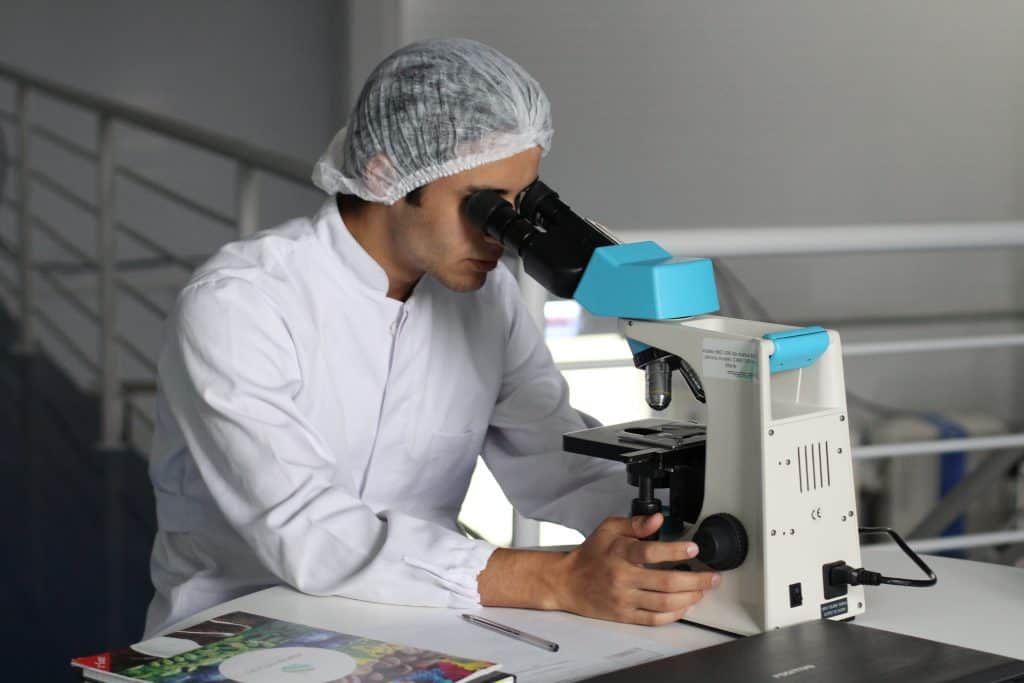
I think it’s fair to say, without hyperbole that the annual physical exam hasn’t changed much in the last 30 years. It’s pretty superficial. It’s the stethoscope, the reflex hammer, and the tongue depressor. A pretty sparse set of blood analytics, superficial physical exam, which if you ask most internist and family practice physicians, I don’t think is very useful or high utility. It’s fair to say that we’re using data to drive decision support for nearly all aspects of our lives. Why, for our own health and wellness, would we be okay with using such low data input?
I think it’s not just blood work. It’s the absence of genetic testing. When a physician wants to know about your family history or genetic history, they say, “Hey, what did mom and dad have?” Well, that only goes so far. It turns out if you really want to understand your genetic risk, you actually have to sequence that person’s genome.
I would say the same about the superficial exam. You can’t possibly from that cursory, superficial annual physical exam say really anything about a person’s risk or current status related to cancer, coronary artery disease, Alzheimer’s, dementia, a number of other chronic age-related diseases. For us, it’s three data silos that are historically part of the superficial annual exam. That’s advanced whole-body imaging.
By the way, it’s not just a qualitative read by radiologists looking at the images. It’s advanced imaging biomarkers that we can follow over time. Your visceral adipose tissue, your liver fat, your ejection fraction, your medial temporal lobe atrophy (or lack thereof), your subcutaneous fat, your thigh muscle mass, your intramuscular fat, really collecting these biomarkers, these measurements that can be used to gauge performance and also your risk for chronic age-related disease.
That’s a really important bucket, the imaging bucket. Both the qualitative read by the radiologist, “Hey, is there something there today,” but more importantly those biomarkers that can be used to predict risk in the future. Of course, the genetic data, whole-genome sequencing, again absence from the annual physical exam historically and the blood analytics as well, the cursory evaluation that you get when you go for your annual checkup.
We have (especially with the platinum offering) sophisticated metabolomic assessment by mass spectrometry. By the way, our program is not static. Our assessment is not static. We’re really aggregators of all of these data-driven measures biomarkers. Our platform is dynamic and changing over time. As new and advanced analytics come out, advanced microbiome, proteomics, we’re going to be incorporating those into our program. Superficial sensors, all that is something we’re looking at and revisiting all the time.
Let’s give a couple of examples of the types of things beyond the genomics that you guys do. You get a calcium score for a person’s heart doing a particular type of scan. Do you want to talk about that?
Sure. I think the assessment really covers comprehensively five domains, so neurovascular looking for aneurysms in the brain. For instance, neurodegenerative looking for risk or current evidence of many of the different dementias, vascular dementia, Alzheimer’s, Parkinson’s and so forth. Cardiovascular looking at heart function and structure, as well as evaluation of the coronary arteries, oncologic looking for solid organ tumors, and then finally metabolic looking for current evidence or risk for metabolic syndrome, diabetes type two and so on.
I think the multimodal approach has been really geared towards those five domains. There are some other domains that we cover with the testing as well, but those are the five principal domains. You asked about coronary artery disease. The full-body MRI that we do is really good for identifying solid organ tumors and in general looking at cardiac structure and function. It’s not so great at looking at very small arteries. That includes the coronary arteries, the arteries that supply oxygenated blood to your heart.
For that, we utilize a very low dose of radiation through a CT calcium score. Honestly, if you’re a global traveler, you would get more radiation flying around the globe in a year than you would from the small amount of radiation from this CT of the coronary arteries. The goal of that particular assessment is to quantify the amount of calcified plaque that’s in your coronary arteries.
The left anterior descending coronary artery supplies oxygenated blood to the left ventricle. It’s the so-called widow-maker. It’s that artery that often becomes occluded or stenosed in a myocardial infarction or heart attack. You’d be surprised to learn—we were actually pretty surprised too—that 27% of our clients between the ages of 35 and 55 have nonzero calcium scores.
We're focused on longevity and performance, and the goal for our clients is we want to work with you, partner with you, and to get you over the age of 100 healthily. Share on XIn other words, they already have, even at the age of 35–55—relatively young—27% of our clients already have calcified plaque, in many cases, in the vast majority of cases not previously known. That’s bad news, good news. The bad news is you’re already on your way towards coronary artery disease. The good news is in that particular demographic and age group we’ve identified that really early.
It’s an opportunity for us for education. It’s an opportunity for us to partner with the patient to make dramatic lifestyle changes in many cases. Some of our clients after seeing that data have moved along to a vegan diet, more aggressive aerobic exercise, more aggressive strength training, and for some of our clients, it’s pharmacotherapy. It’s a statin like many folks are currently.
I think it’s the whole range of options that are available to our clients, pharmacotherapy, aggressive lifestyle changes when you can identify these disease processes pre-symptomatically and at the early stage. That’s what we do with our CT calcium score.
Reminds me of one of Peter Drucker‘s famous quotes, “What gets measured gets managed.”
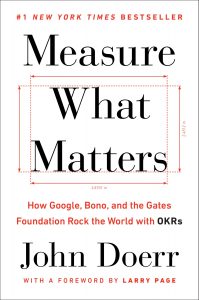
Folks in startups on the West Coast here are very familiar with the book Measure What Matters. The reality is that most startup companies are using OKRs (objective key results). As it turns out if you can’t measure it, how are you going to drive decision support in your company or your startup company if you’re not able to assess how the company’s doing through something measurable?
Similarly with your body. Historically really, the problem with the superficial annual physical exam is that we haven’t been measuring what matters. The data-driven assessment that we have allows us to measure what matters.
Now, the MRI scan that you do is a whole body, but you do something different to image the heart because it’s constantly moving, beating. Getting a still image of it isn’t really as easy to do as with another body part like a leg or an arm, you just keep it still. How does that work?
The CT calcium score that I just mentioned is really a small component of the overall whole-body imaging. Most of the advanced imaging that we do is through whole-body MRI. We imagine five different stations: head, neck, chest, abdomen, pelvis. Part of that is what we call a non-contrast evaluation of the heart, so we’re not injecting any contrast dye through any of the MRI assessments. Of course, there’s no radiation since it’s MRI-based.
Really, we learn a lot from that hour and 15 minutes that you’re spending in the MRI, and that includes images of your beating heart, looking at the valves, looking at the left ventricular function, looking at your myocardial mass. Again, it’s not just our world-class cardiologist who evaluates your heart structure and function from those images, but it’s also collecting cardiac biomarkers. Myocardial mass, ejection fraction, diastolic volume, a number of other biomarkers as well that can assess.
Is there any evidence right now of heart failure, structural, or functional cardiac abnormalities? More importantly, are there any early indicators pre symptomatically of early heart failure and so on? I think really the cardiac assessment is a little bit of a microcosm for what we do across the whole body with our whole body imaging which is not just a qualitative read by a cardiologist or a radiology team, but really collecting biomarkers, the idea of kind of scan-rescan change analysis.
In a way, your most sensitive measure of risk for chronic age-related disease or progression is really going to be how are you changing over time, not just what your baseline is. Which is why it’s so important to come back year after year and we can compare these biomarkers longitudinally.
You mentioned something earlier in the conversation is 4D Echo. Can you elaborate on that?
Yes. It’s another way that we evaluate the heart for our platinum clients. MRI is actually really good at looking at myocardial mass. For instance, cardiac MRI is not as good at looking at valve abnormalities. The mitral valve, which is the valve that connects the left atrium with the left ventricle, and these valves can sometimes become stenotic or stiff or they can have what we call insufficiency. In other words, blood flow regurgitates backward through the valve.
Those abnormalities are especially seen quite well with echo or ultrasound of the heart and in combination with the CT calcium score, and in combination with the cardiac MRI, and in combination with the continuous rhythm monitoring where we’re assessing the rhythm of your heart using a wearable sensor for about seven days. We get a very high level and a comprehensively deep view of the heart.
Everything from the coronary artery’s structure-function, potential arrhythmias, atrial fibrillation, some of these other diseases that can affect the heart. We’re pretty much covering all the bases with our comprehensive assessment.
I’m sure you’ve heard about Apple with their watch, monitoring heart health with being able to capture the data and potentially warn the wear of an impending heart attack or something beforehand and save their life. How does something like that compare to what you do? I already know the answer to it but I’d love for you to explain it for our listener.
Well, kudos to Apple. I think it’s great, but I would say similar to 23andMe, it’s somewhat superficial and it’s not comprehensive. Some of the more subtle rhythm abnormalities, for instance, will be unable to be detected. I think if I look at our assessment, I think one of the strengths, quite frankly, is that it is multimodal.
If you’re really trying to understand your current condition or your risk for chronic age-related disease, if we just look at your imaging, or we just look at your genetics, and we just look at your blood biomarkers. Our predictive capability is only going to go so far that you put all of that data together. That’s what we do with our mild cognitive impairment or dementia risk predictor. Now you have something that is actually quite accurate. Just using unimodal data or one of the data silos like from an Apple watch, really doesn’t tell you the whole story. We think it’s also why we don’t do à la carte testing.
We do have some clients occasionally who will say, “Hey, I don’t want to pay for the whole thing, all I want to do is whole genome sequencing or just want to do the imaging.” Well, we don’t do that. This is part of a comprehensive data-driven precision health assessment, and just getting your genomics or just getting your imaging is only gonna go so far in terms of risk prediction. By the way, this also leads to false positives. If you just have unimodal data and you’re not able to cross-reference a finding with other modalities, that can also lead to false positives.
That’s the number of reasons why we don’t do à la carte testing. Enjoy your Apple watch. Just appreciate what it can and can’t do and know that if you really want to understand your current condition and risk for some of the more common chronic age-related diseases, you’re really going to have to go deep and multimodal with the assessment.
So much more pre-emptive to go through your assessment than to just rely on an Apple watch. It’s kind of a just-in-time approach. “I’m almost going to be in a coffin. Let’s just save me at the very last minute,” is not very proactive.
No. The data that I rattled off, and that’s the subject of the PNAS paper. How many of those findings—the early tumors or aneurysms, or coronary artery plaque, the genetic—could you have gotten with a superficial sensor wearable? Essentially, none of them. As much as I love my Apple watch, my Fitbit, and (of course) use them, in terms of driving meaningful decision support for truly sometimes life-altering diseases and conditions, you’ve got to go deep and multimodal with the data.
When you say life-altering these are all, oftentimes most cases life-threatening, if not detected and handled early.
Correct.
Let’s talk about the microbiome for a bit because that’s part of the analysis. Imbalances in the microbiome have been implicated in autism in some studies and they can have profound health implications if our microbiome is not healthy. Could you elaborate a bit on that?
Yeah. I will just also mention that we’re in a bit of transition with our microbiome program. We used to do it in-house. We’ve now decided that we’re going to partner with a company that focuses on microbiome solely. I’m not at liberty to mention who the partner is, but in general, we’re very supportive of offering and we’ll be offering microbiome testing.
A large number of our clients were previously told that they were healthy, when in fact, after all the tests were done, they were not. Share on XWe do believe it’s an important part of an individual’s overall comprehensive assessment, in combination with all the other data silos. Just looking at your microbiome in the absence of looking at the imaging, genetics, or the blood biomarkers only goes so far. You’re absolutely right. There’s an increasing body of literature that suggests that your microbiome and perturbations in the microbiome can put you at risk for a number of chronic age-related diseases. We think it’s a very important part of the testing.
I’m curious. You mentioned one of the ways to change your lifestyle if you get some bad news, potentially life-altering news in regards to your heart health, is to switch to a vegan diet. I’m curious, are you vegan or what have you done differently in terms of your diet to increase your longevity?
I’m not vegan and I get that question a lot. I’ve given a number of talks on what we do, including the A-360 members on longevity and performance. Peter’s a great, close friend. I will often respond to that by saying, “Well, it doesn’t really matter what I do because I think the whole point of the assessment is to really come up with your personalized modifiable risk factors, and the whole assessment is really geared towards you. It’s really building the story of you through the data.”
Do I think for some folks moving to a vegan diet as a logical choice? Absolutely. We’ve had a number of our clients, especially with early incipient coronary artery disease who have made that decision. I will say from my own perspective and what I do, I focus a lot of my longevity and performance goals on vigorous exercise.
If you actually look at astronauts who are in the International Space Station, how many hours a day are they exercising up, they’re about three hours a day. So, there are three hours of activity. It’s not vigorous running the marathon, but it’s three hours of activity. I actually think for most of us, we are just vastly underactive. Even doing a 20- or 30-minute jog, that’s better than none at all.
I would argue that probably most of us don’t even have the right or get good sleep. Honestly, if we’re not really working our body and our brains so that when we hit the pillow at night, we rest peacefully and don’t have challenges falling asleep. Do I run for three hours a day? No. Do I swim for three hours a day? No, but through swimming, yoga, running, biking, try and get two to three hours of activity every day.
I really think that helps with sleep. When folks asked me, “Well, what are some of the most important tenets of longevity and performance?” I say number one on that list is sleep. It’s got to be sleep. You’re not getting eight hours of sleep at night? Forget it. Your chances of living to 100 healthily, no chance. Folks who say, “I can get by within five or six hours.” No, that’s just not true. There are actually very few people who genetically can get away with less than 7–8 hours of sleep.
You got to get good sleep. I think one of the mechanisms to get good sleep is to be physically active and to find out what works for you. What I would also say is that many of us 20 years ago heard it was all about the heart and aerobic exercise. All you had to do was get on a treadmill. Well, that was not the correct advice. If you look at Jimmy Carter, actually who’s in his 90s, he was saved by PD-1, which is a drug that cured his melanoma and becomes metastatic to the brain.
Five years ago, if he had developed melanoma, metastases to the brain would not have survived, but thanks to this particular drug, he’s now a melanoma survivor. In the last year, he’s fallen three times, so his muscle mass is low. We hope that we don’t find that he has a hip fracture. That’s like so many Americans that are focused now on aerobic but forgetting about muscle mass and forgetting about strength training, so you’ve got to do both.
Muscle mass is actually one of the number one predictors, folks who are able to successfully leave the ICU, if you unfortunately ever find yourself in the intensive care unit having muscle mass. I go back to this idea that for our clients, we’re looking at you holistically using all the data and coming up with, in many cases a program, not a pill that will work for our clients.
Some of that might be a vegan diet. Some folks need to focus more on aerobic exercise, others more on strength training. Sure, for some of our clients, absolutely, pharmacotherapy is important and necessary. But we think with a lot of the earliest signatures of chronic age-related disease that increasingly lifestyle changes can be used at those earliest stages and hopefully, prolong or eliminate the need for pharmacotherapy.
This is really fascinating and such a powerful discussion. Thank you so much for sharing all this. One last very quick question. Sell me, if you could, ongoing platinum with your offering instead of the standard option, which is what I initially signed up for.
Yeah. Three pillars of the platinum program that are not in the core. By the way, I wish for $7500 we could do everything. The testing is expensive. We do a much more in-depth cardiac assessment with the platinum offering. The continuous rhythm monitoring where you wear a wearable for seven to fourteen days, that’s interpreted by a cardiologist. The 4D echo of the heart is done in addition to the cardiac MRI, so there’s definitely a much deeper cardiac assessment.
The other is blood analytics. The second pillar, the much more involved evaluation of early metabolites of chronic age-related disease. We look at in addition to a more comprehensive, traditional set of serum markers. In the platinum assessment, we do evaluate close to a thousand different metabolites by mass spectrometry. Finding really the earliest biochemical signatures of chronic age-related disease, inflammatory markers for metabolic syndrome, pre-diabetes, trying to identify pre-diabetes long before diabetes as an example.
Thirdly, our chief medical officer is Dr. Tom Caskey. He started the clinical genomics program at Baylor, he’s the lead author and senior author on the PNAS publication that was just published.
He and his team do a comprehensive manual interpretation and annotation of your genome as a platinum client. You literally have one of the most famous clinical geneticists, really kind of the father of clinical genomics with his team looking manually at your genome to make sure that nothing is missed. Those are the three pillars that separate platinum from the core.
Now I’m thinking of doing platinum, thank you so much. This was really fabulous. Your offer of 20% off is super generous. It’s so important that we make data-driven decisions about our health, not just about our marketing and SEO, not just about our financial investing decisions and so forth. Super valuable. Thank you so much, David.
You’re most welcome. Actually, if you’re interested, I can give you an email that you can pass along to your clients. If you’d like that, I can just email it to you. I’ll do that. I’ll send you an email.
Awesome. Thank you so much, David, I’ll let you go. If there’s anything I can do for you, please don’t hesitate to reach out. I’m a world expert on SEO. I know how Google works more than almost anybody, even Google engineers. If you’re trying to get a keyword ranking higher or get a web page ranking higher for a keyword, or you’re wondering why you don’t have a knowledge panel for a certain keyword or something like that, just reach out and let me know.
Wonderful. Thank you so much, Stephan. It’s great to participate today.
Thank you. All right. Well, take care. I’ll maybe see you at your facility when I come in for my annual and then my wife has already signed up to you, just have to select the date in July, so thanks again.
Wonderful. We’ll see you soon.
Okay. Take care. Bye.

